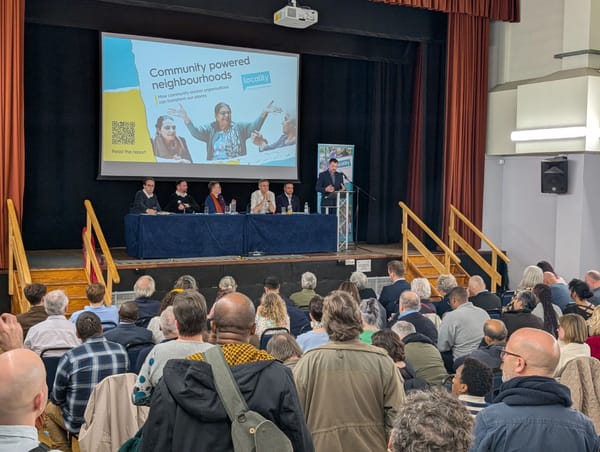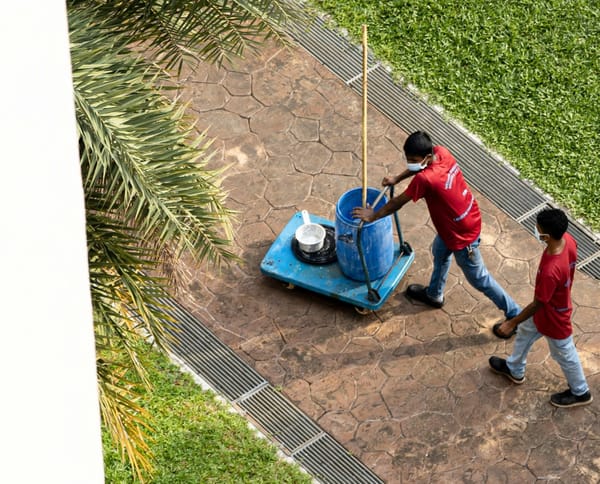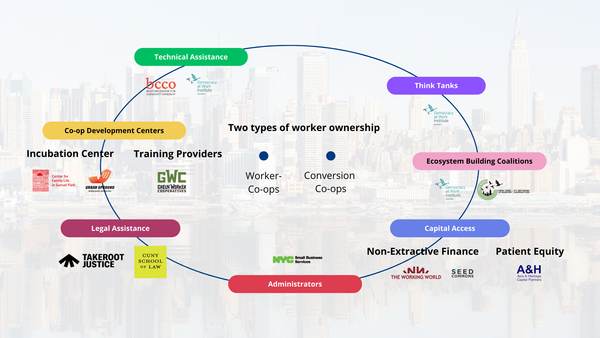How to use viral videos to combat disinformation campaigns
How a think-tank in Moldova is combating disinformation campaigns by Russia and safeguarding an environment for democracy to thrive.
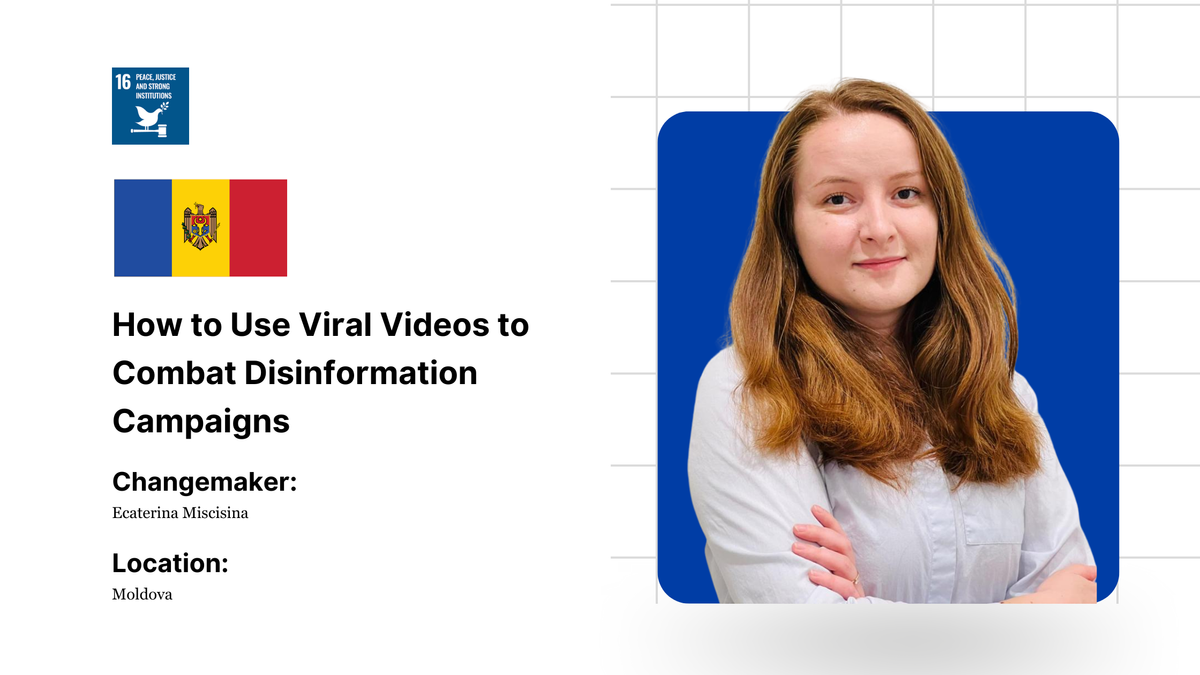
Russian disinformation campaigns are a threat to Moldova
Moldova, situated between Romania and Ukraine, is a democratic state vulnerable to disinformation campaigns from Russia. Although Romanian is the official language, many Moldovans speak Russian due to its Soviet past, which makes it easier for Russia to launch disinformation campaigns and establish pro-Kremlin media outlets.
Moldova used to have a high dependence on both Russian energy and continues to receive financial support from the West, a balance it has grappled with since independence.

Many older Moldovans are nostalgic for the Soviet era. In 2001, just 10 years after the collapse of the USSR, Moldova became the first post-Soviet state to elect a communist party back into office. Although the party was eventually ousted in 2009 after massive protests, the division between pro-Russian and pro-European campaigns continues to dominate Moldovan politics.
Moldova has taken in over 100,000 Ukrainian refugees (nearly 5% of their population) since Russia’s invasion and is applying to join the European Union (EU). Around 60% of Moldovans support closer ties with the West, with the EU already being Moldova’s largest economic partner. These are all things which Russia opposes as it wishes to expand its sphere of influence in Eastern Europe.
2024 will be a critical year for Moldova, as its citizens vote on two important issues in October: a Presidential election and a referendum on joining the EU. Russia is taking notice, responding with cyber attacks against government websites and gathering the leaders of pro-Russian political parties in Moldova for meetings in Moscow to develop a strategy for these two upcoming votes.
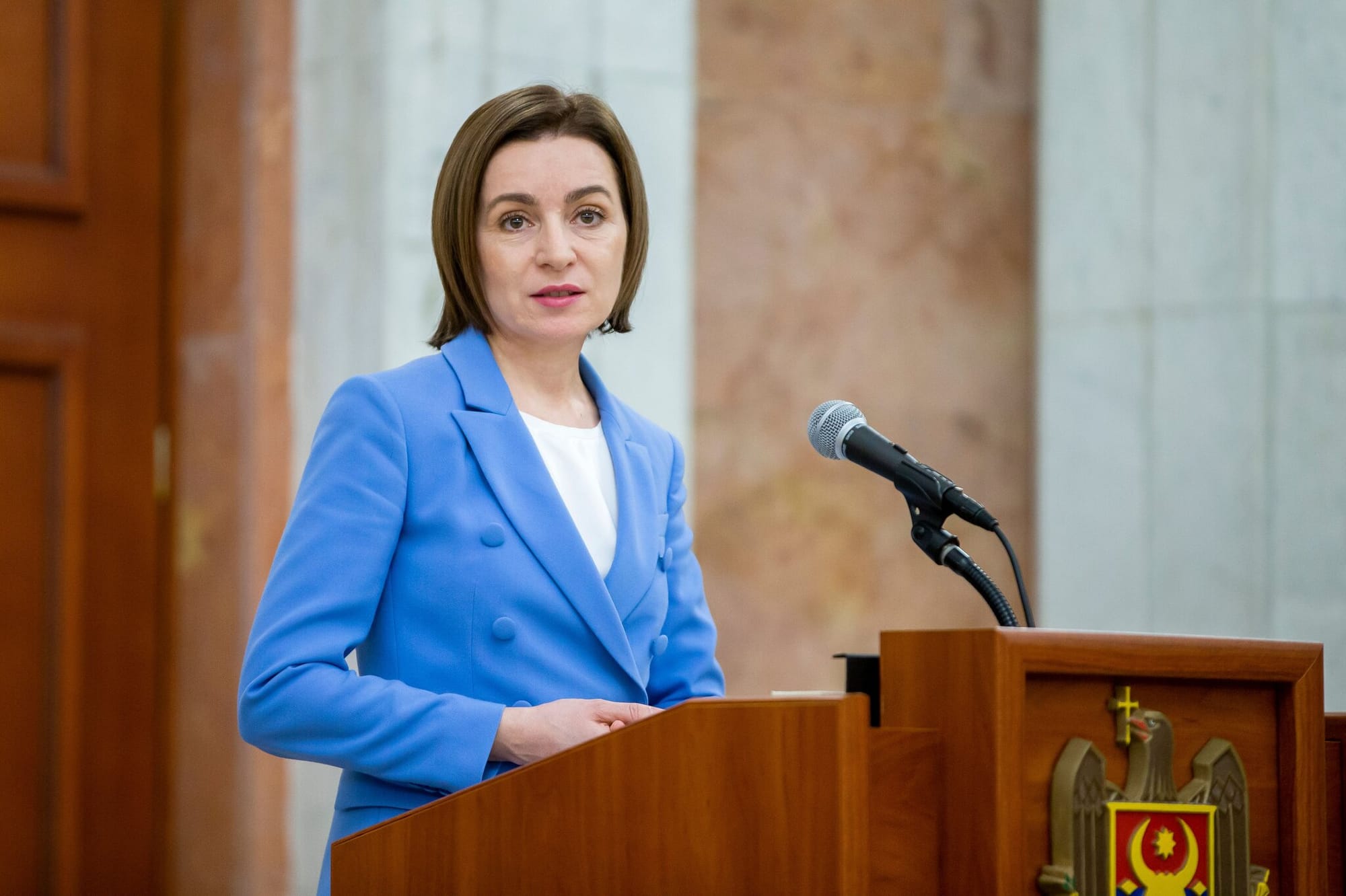
Possible goals of Russian disinformation campaigns
These disinformation campaigns spread false articles, photos and videos with these goals:
- Undermine confidence in Moldova’s pro-European leaders and influence its 2.5 million population to favor pro-Russian parties and policies
- Divert attention from negative results and crimes committed by Russian forces in Ukraine
- Expand Russia’s influence and evoke nostalgia for a Russian Empire among Moldovans, paving the way for a future invasion
For example, pro-Russian media created a deepfake video showing Moldovan President Maia Sandu banning a popular berry-infused tea, aiming to depict pro-European Sandu as mocking the poor and disregarding a cherished tradition.
When the invasion of Ukraine began, these disinformation campaigns shifted blame from Russia by omitting photos of the battlefield and bombings that contradicted its narrative of a ‘special military operation’.

This disinformation war is fought on social media and financed by large ad spending
Despite the government shutting down several pro-Russian TV stations and media outlets and blocking access to Russia’s main news agencies since June 2022, disinformation still spreads widely on social media channels like Facebook and Telegram, where an estimated 1.6 million Moldovans spend much of their time daily.
A common tactic is investing heavily to boost the reach of misinformation videos via Facebook Ads, social media influencers and bloggers. Ecaterina estimates that some ad campaigns could spend up to $60,000 USD per month, excluding video production costs.
“These disinformation campaigns can influence the results of our national elections and directly affect Moldova’s future and perhaps Eastern Europe,” said Ecaterina.

AI-powered bots flood the online space
Another tactic uses AI-powered bots to comment on Facebook pages of media outlets, nonprofits and even President Sandu. These comments often use lifelike profile images generated by AI to appear as average citizens. They are usually short (3 - 10 words long) and often endorse pro-Russia politicians like Ilan Shor of the Sor party.
For example, brief messages in Romanian like “President Sandu is corrupt”, “her pro-Western government is driving Moldova toward war” or “the government is the reason why most Moldovans are poor” are effective in eroding confidence by suggesting governmental incompetence and hinting at Russia as a savior of the Moldovan people.
These repetitive messages can mislead untrained Moldovan citizens into the inaccurate belief that there is widespread dissatisfaction with the government and that Russian intervention is the solution.
“Imagine constantly seeing pro-Russian videos and comments on social media everyday, boosted by a big ad budget and supported by bots. Without a trained eye, it can be easy to believe in these false narratives,” said Ecaterina.
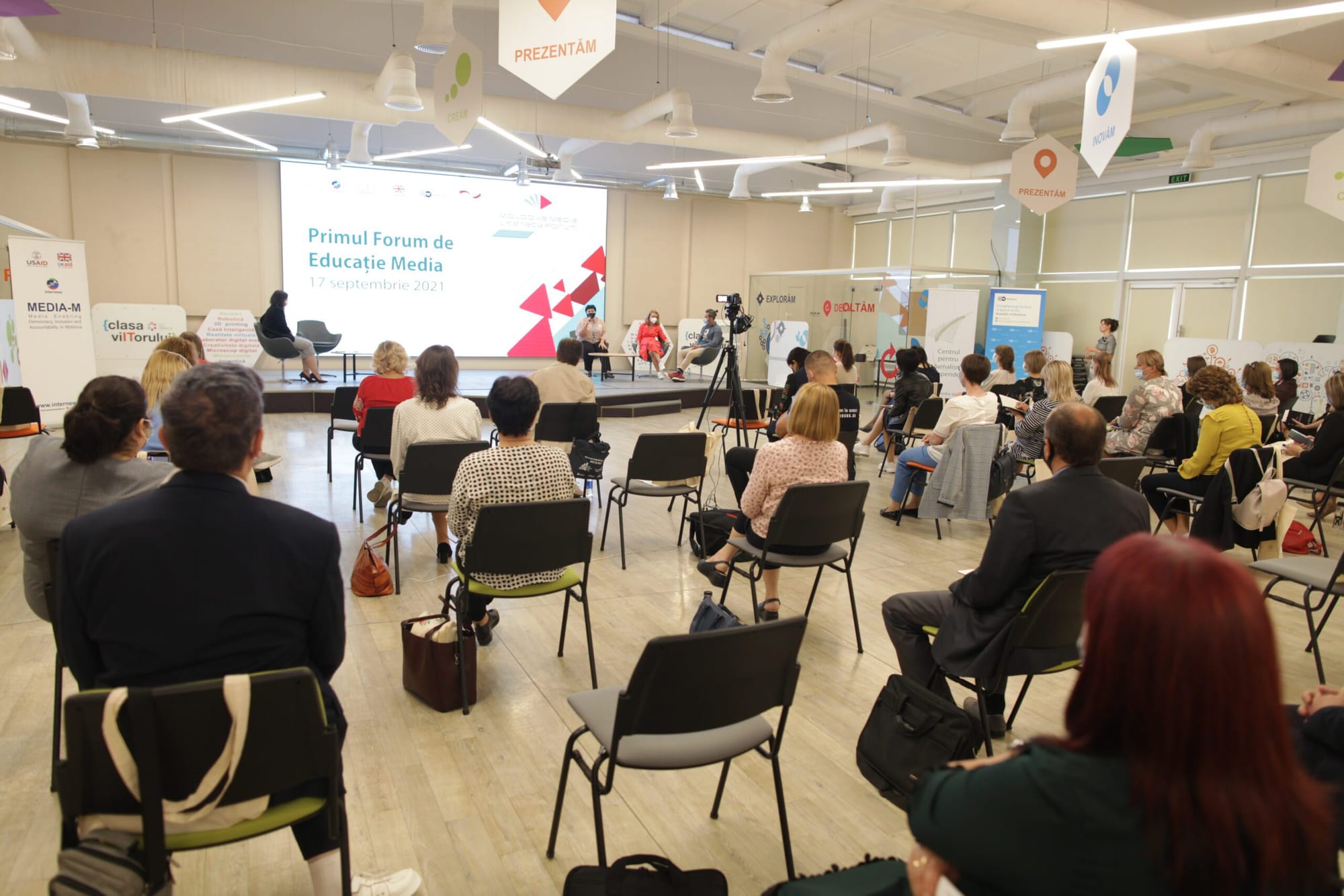
Moldovans are particularly vulnerable to disinformation because of media illiteracy
Media literacy is still developing for most Moldovans. Unlike Ukrainians who have been wary of Russia’s threats since the annexation of Crimea 10 years ago, Moldova has not experienced visible military offensives, leading many to underestimate the dangers that Russia could pose.
“Instead of a military invasion, it is much cheaper for Russia to fund pro-Russian politicians and wage an information war,” she said.
The best weapon to combat these disinformation campaigns is media literacy, which is the ability to critically analyze media stories to determine their accuracy or credibility. While NGOs in Moldova work to strengthen resilience against fake news, propaganda and manipulation, there is still a long way to go.

Ecaterina became interested in combating disinformation campaigns because of her career in the media
Ecaterina became interested in combating disinformation campaigns while working as a journalist and news producer covering social and economic issues and newsworthy events.
“As I interacted with different people and heard the false narratives they shared, I began to understand how effective the Russian disinformation campaign was,” she said.
Her parents had lived well in the Soviet Union and were nostalgic for those times, raising her in a Russian-speaking environment, with Russian songs, TV series and culture.
“Many Moldovans share this background and I think my upbringing helps me to empathize with why they are more susceptible to false information spread by Russia and adapt my messaging to one they can relate with,” Ecaterina added.
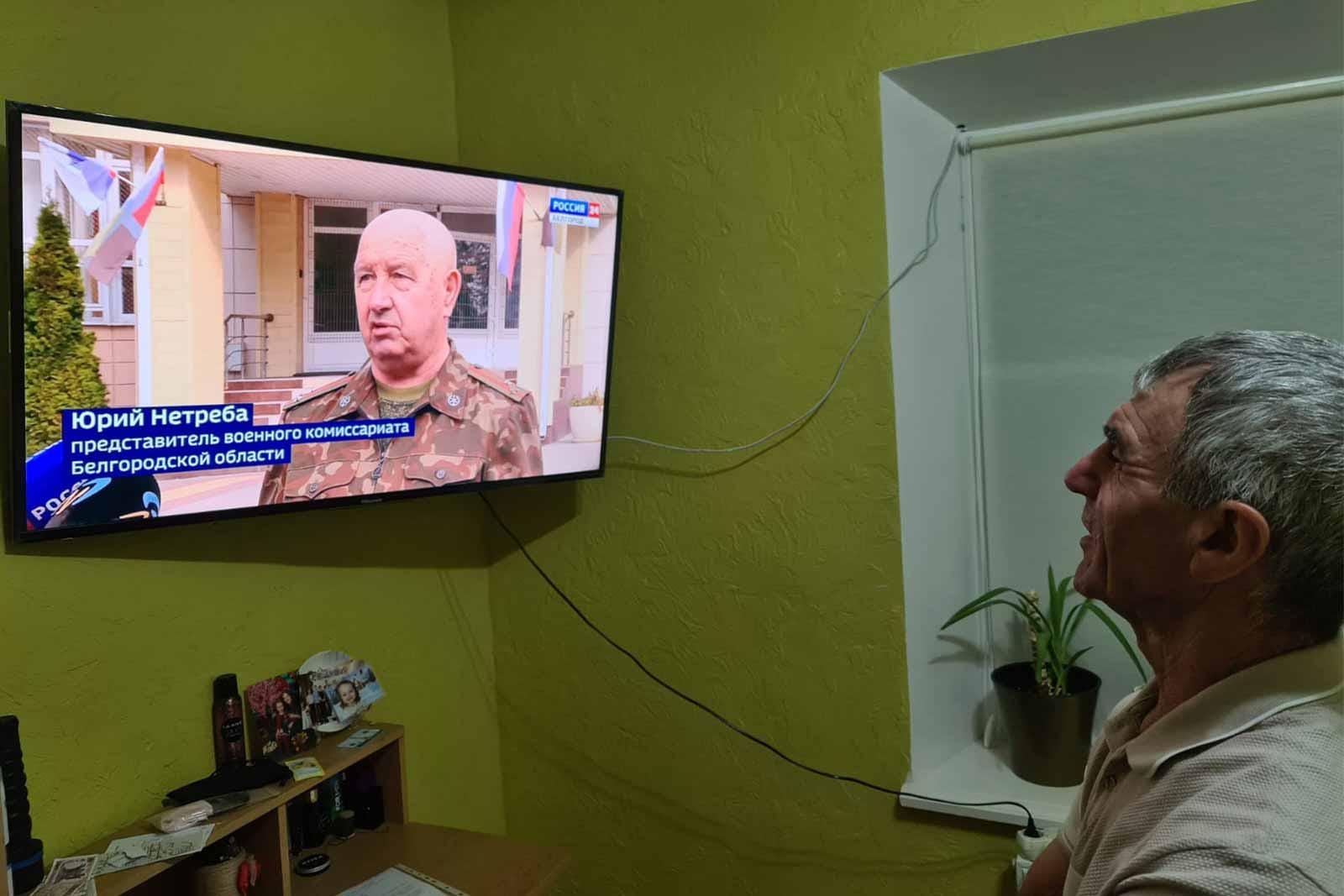
Over the years, she observed the systemic nature of the problem, such as how Moldovan television often featured news from Russia that portrayed the European Union and United States unfavorably and how pro-Russian politicians with media influence swayed public opinion on important issues in Moldova and the region.
Russia’s financial advantage enabled it to produce high quality content and flood the Internet with disinformation through paid bloggers, TV stations, ‘news’ websites and fake experts.
This reach surpassed what non-profits and Moldova’s media outlets could achieve, especially during election periods. “This alarmed me and made me want to play a part in combating these disinformation campaigns,” she said.
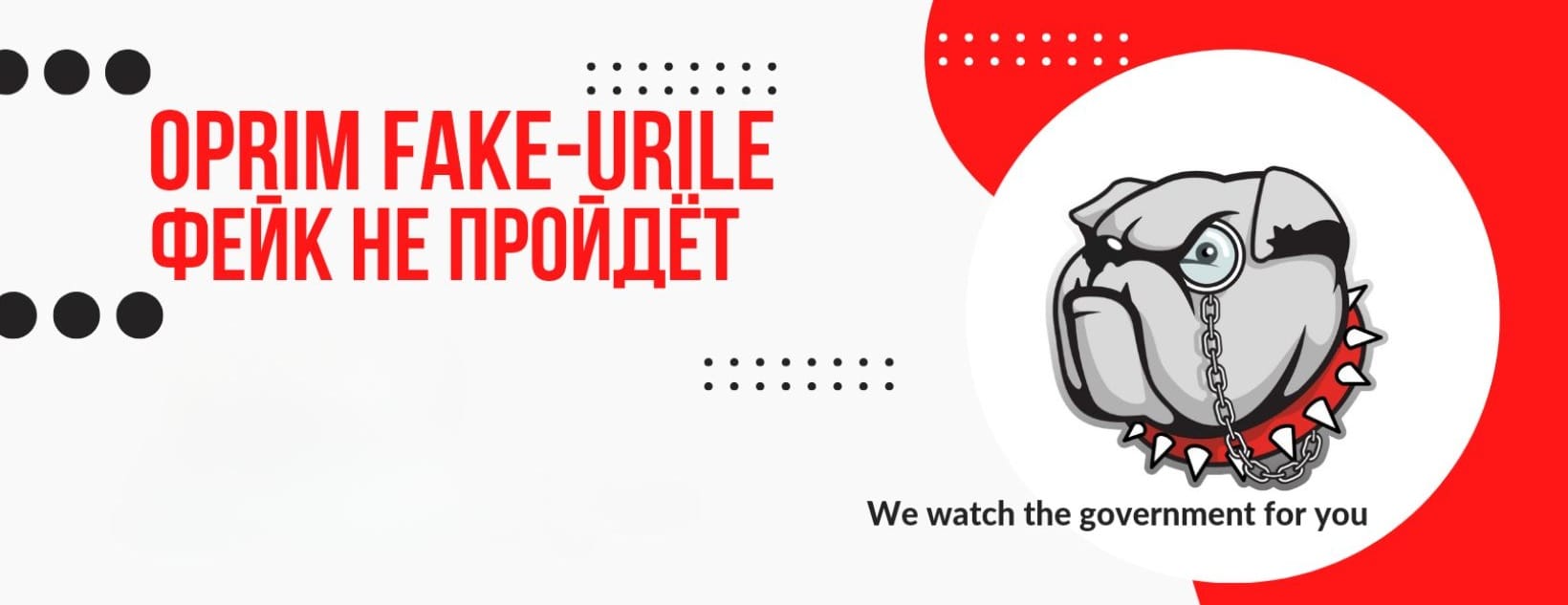
Solution: Produce high-quality, expert-led and viral content to combat disinformation campaigns
She started working for WatchDog, a think tank that gathers sectoral experts to contribute towards developing public policies and providing accurate information for the public and institutions about important issues in Moldova like electoral processes, human rights and the economy. WatchDog’s aims to foster an environment favorable for democracy to thrive in Moldova.
When it was first started, WatchDog had a small team of 6, of which only 2 were experts providing analysis and policy recommendations to the government. However, it wanted to influence change independently of the politicians in power.
Recognizing that most Moldovans understand Russian and consume Russian content, WatchDog saw the need for a trusted alternative content source to explain complex issues to ordinary people in an engaging way.
“Russian content was interesting, well made and easy to understand. We needed a similar alternative that spread accurate content,” she said.
Today, WatchDog focuses on three main areas to combat Russia’s disinformation campaigns: (i) monitor where disinformation is spread, (ii) produce quality video content to explain important topics and (iii) provide experts who can comment on issues.

Monitor where disinformation is spread
WatchDog’s monitoring department consistently tracks media sources funded by Russia or Kremlin-aligned actors. They produce reports identifying the main narratives these sources promote and share their findings with the government and television partners to debunk false news.
With experience, WatchDog can now predict false narratives and create content to discredit them even before they spread. One persistent false narrative claims that Moldova will be harmed by its association with the European Union, of which it is currently a candidate country and has received more than $0.5 billion Euros in grants.
For example, in April 2024, when Moldova’s Defense Ministry announced the purchase of an EU-supported radar to identify drones and rockets, pro-Russian media outlets claimed the EU was dragging Moldova into war against Russia. This misinformation sowed fear among Moldovans, who largely opposed war, and undermined the government’s efforts.
“Moldovans are not stupid. The ordinary person just lacks knowledge of military and national security issues because there was no need for them to know,” said Ecaterina.
With the help of their panel of experts (see below), her team produced a series of videos explaining that radar is not a weapon, but a tool to identify aerial threats and secure Moldova’s skies against foreign aggressors.
Produce quality video content to explain important topics
WatchDog produces video content in Romanian or Russian, featuring presenters or experts discussing topics like corruption and the energy crisis. These videos are then shared on WatchDog’s Facebook page.
For example in 2020, Moldova’s then pro-Russia President Igor Dodon proposed a 10-year, $200 million Euro loan from Russia to address a budget deficit made worse by the COVID-19 pandemic.
However, critics argued that it posed long-term risks to Moldova because of obscure clauses that could channel the money towards unnecessary projects that favor Russian companies.

Working with their experts in Economics and Energy, WatchDog launched a campaign with videos and opinion pieces to educate Moldovans about the loan’s implications. Although the loan agreement was ratified by Moldova’s Parliament on April 23, it was later ruled to be unconstitutional by the Constitutional Court following a petition from pro-European opposition lawmakers.
Provide experts who can comment on issues
WatchDog currently has a panel of 17 experts in areas such as public policy, energy, banking, elections, European law, urban design, international relations, media monitoring, national security and the military.
Many Moldovan TV stations lack a variety of experts, often using the same individuals for different topics, even when it might not be their true area of expertise.
Therefore, WatchDog’s experts serve as regular guests to give interviews in news studios and write opinion pieces which provide clear, factual analysis of important issues that are sorely lacking, especially in the areas of national defense and the military.
“Our goal is to give Moldovan journalists three perspectives when they write about something: the views of the ruling party, the opposition and an objective, expert opinion from us; to ensure balanced reporting,” said Ecaterina.
Impact measurement
WatchDog evaluates the impact of its video content using social media metrics such as likes, views, comments and shares, aiming for consistent growth in these indicators. They closely analyze audience retention graphs provided by Facebook, looking for moments where viewer interest drops, to identify potential issues like unappealing images or dull text.
Ecaterina also stays updated with the latest social media trends and adapts their content accordingly. For example, this meant reducing the number of long-form videos which they previously favored, and changing to producing short-form videos like reels, to cater to current audience preferences.
This data-driven approach allows WatchDog to refine its video content based on engagement patterns, audience preferences and best practices, enhancing its effectiveness in raising awareness and influencing public opinion.
“Our audience is our top priority, so we constantly adapt our content to deliver something that will resonate with them,” she said.
How to increase chances of your video going viral
Ecaterina offered a few tips from her experience producing several videos that have gone viral and reached hundreds of thousands of Moldovans:
Start by clearly defining your target audience and tailor your content to each platform’s specific criteria
WatchDog’s primary target audience is Moldovans aged between 30 to 50 years old, who are more politically engaged and vulnerable to disinformation campaigns. “Younger Moldovans are generally more media-savvy or less interested in political issues, reducing their susceptibility to misinformation. Therefore, we focus on people who are older,” she said.

Although WatchDog does cross-post videos to other social media channels like TikTok and Instagram, their main effort is on Facebook, where nearly 60% of Moldovans are active users.
Facebook’s algorithm favors video content and displays it at a higher rate than posts or photos to its users. In particular, it favors short video reels (around 90 seconds maximum). In Ecaterina’s experience, the shorter the video, the higher the chance that people will see it.
However, WatchDog does still produce longer, more analytical videos on topics like defense, economics and politics that cater for a niche audience that is very politically engaged.
“While these kinds of videos are unlikely to go viral, the people who watch them tend to be more opinionated and can use these arguments we are providing when they are talking to their friends and relatives, which also helps us with spreading accurate information,” she added.

Shoot your video in a 4:5 aspect ratio (i.e. 1080 x 1350 px)
Ecaterina recommends creating your video using a 4:5 aspect ratio because it can maximize visibility and engagement on Facebook. This format takes up more vertical space in users’ feeds compared to traditional 9:16 videos (1080 x 1920 px), making it more eye-catching and likely to capture the viewers’ attention as they scroll. “Its all about standing out in a crowded news feed and making them curious to stop scrolling and watch the video,” she said.
Place your main message in the first 3 - 10 seconds - because audience attention spans are so low now, you will likely lose them if you cannot capture their interest within the first 3 - 10 seconds. Ecaterina advises starting your video with mentioning your main idea outright and having a hook that arouses the interest of the audience to keep watching.

When explaining numbers, use visually striking graphics
When it comes to numbers such as economic indicators or trends that may be hard to understand, Ecaterina advises to be creative with using graphics to help the audience receive the information better.
For example, when making the point that Russia had a GDP that was 40 times bigger 10 years ago than today, Ecaterina and her team used a watermelon and an apple to show the difference between the two. “This is much more entertaining and this image will stick in people’s minds,” she said.

Create “edu-tainment” content
“Nobody is going to read an article about 5 false narratives about the COVID-19 vaccination. The key is to create high quality content that is entertaining and yet educational for your target audience,” she said. Russia understands this well and typically places narratives it wishes to push in entertainment mediums that people consume, such as television series, movies, standup comedians and songs.
For example, Russian pop songs may feature lyrics asserting claims such as the restoration of the Russian Empire over lands with Russian-speaking populations. Entertainment, when harnessed well, can be a very powerful way of lowering the defenses that people may have and getting them to be open to new perspectives.
When creating content, think about how you can make it entertaining and funny or if this is not within the tone of your organization, try to partner another organization who shares your views and could afford to take on a humorous tone.
Add subtitles
To cater for many people who may be scrolling through social media when they are at work or when commuting in public transport and prefer to watch your videos in silence. This also helps to make your videos accessible to those who are deaf.
Analyze content from similar organizations
Ecaterina maintains a curated list of successful social media accounts, spanning both within and beyond her industry. She actively monitors these accounts to analyze their top-performing videos, aiming to glean insights into their best practices.
This strategic approach allows her to stay abreast of trending topics and continually evolve her tactics for combating Russian disinformation campaigns.
“They have already invested resources into testing what works and we can replicate their successful strategies to optimize our efforts, save time and enhance the likelihood of our videos going viral,” she said.

Choose the right statistics in consultation with the experts
For example, many pro-Russian politicians advocate for Moldova’s inclusion in the Eurasian Economic Union (EAEU), a bloc consisting of five member states: Russia, Belarus, Kazakhstan, Kyrgyzstan and Armenia, as an alternative to the European Union.
To debunk the notion that joining the EAEU would benefit Moldova, the team created graphics and videos around specific data points to compare the progress of EU and EAEU member states, such as:
- Median wage - they showed that median wage in Russia, the EAEU’s leading economy, had stagnated over the past decade and even halved from $1,000 to $500 after the annexation of Crimea in 2014. Meanwhile, median wages in EU countries with histories similar to Moldova, such as Estonia and Romania, had doubled in the same time period.
- Median pension - while Russia’s median pension is slightly higher than Moldova’s, pensions in Estonia and Romania, economies that are much smaller than Russia, are significantly larger than that of Moldova.
- Remittance levels - Because Moldova has an estimated 1.25 million people living abroad, remittances contribute to a significant part of its national Gross Domestic Product (GDP). They showed that over the past decade, the source of remittances from Russia has reduced from 66% to 9%, with remittances from EU countries now making up 54% of all remittances. “Almost everyone living in Moldova knows someone working abroad and sending money home and can relate to these numbers,” said Ecaterina.
- Life expectancy - they also compared the average life expectancy in Russia (72 years) with Romania (76 years) and Estonia (79 years) to invalidate Russia’s narratives that the agricultural food products produced in EU countries are unhealthy.
While selecting these data points, they also chose to leave out macro-economic indicators such as value of goods exported within the EU and the EAEU ($4,000 billion compared to $72.6 billion) and comparisons of GDP.
“While value of goods exported and GDP are important indicators for economists, these indicators might not resonate with the ordinary man on the street,” said Ecaterina.
She relies on her instincts as a journalist and ideation sessions with WatchDog’s panel of experts to identify metrics they can use to invalidate Russian disinformation that people can understand and relate to.

Reaching people who are in echo chambers and unexposed to other points of view
Echo chambers occur when individuals only engage with information that reinforces their existing beliefs, isolating them from alternative perspectives. This is reinforced by social media algorithms, which prioritize content that resonates with a user’s established viewpoints, contributing to deeper ideological divisions and limiting opportunities for constructive dialogue across differing perspectives.
In Moldova, this phenomenon is evident among some pro-Russian individuals, who exclusively rely on sources like IPTV, noi.md and pro-Russian Telegram channels for news.
To bridge this gap and reach audiences with divergent views, Ecaterina advocates for pro-active engagement. Despite potential discomfort, Watchdog actively accepts invitations and seizes every opportunity to appear on media outlets catering to opposing audiences.
In Moldova, there is no practice of dictating what the interviewer can ask, so it is crucial for the expert that WatchDog sends to appear at these media outlets to be armed with facts and focus on conveying their message simply. It is key for these experts to stay calm and not engage if the interviewer uses an emotional argument or makes personal attacks.
“While countering with truth and evidence may not completely change their minds, our goal is to plant a seed in their mind that maybe there is another way to look at the issue,” said Ecaterina.
Challenges with combating disinformation campaigns
Despite Ecaterina and Watchdog’s efforts, certain narratives, such as tensions surrounding gas supplies, remain extremely challenging to counter and are likely to persist for the foreseeable future.
For years, Moldova heavily relied on Russian gas, maintaining a contract with Gazprom, a multinational energy corporation majority owned by Russia, for gas and energy supply.
In October 2021, shortly after President Sandu’s party took office, Gazprom threatened to not renew its contract unless Moldova accepted higher gas prices and settled an alleged $800 million debt - a claim later disproven by an independent audit
Amid Russia’s full scale invasion of Ukraine in February 2022, Gazprom decreased gas supplies to Moldova by 30%, breaching its contractual obligations. Russian attacks on energy infrastructure in Ukraine also disrupted Ukrainian gas exports to Moldova.
These actions by Gazprom and Russia resulted in significantly higher gas prices for Moldovan consumers. Moldova was forced to seek emergency gas supplies from other countries to get through the winter, something that was unprecedented in its history.

Yet pro-Russian politicians blamed President Sandu for the higher gas prices and her government’s strategy to reduce Moldova’s dependency on Russian gas. WatchDog made several social media videos and appearances at television stations to explain the situation and how the government’s strategy to reduce Moldova’s dependency would be better for the country’s independence and eventually lead to lower prices for consumers.
But this is a narrative that is extremely difficult to counter as there are still many Moldovans who believe that Gazprom offers cheaper gas than anywhere else and that Moldova is better suited to go back to depending on Russia.
“This is an example of just one issue that is extremely difficult to counter. It is more a marathon than a sprint and we will forever be David against a Goliath. But we will keep trying,” said Ecaterina.

Featured Changemaker
A journalist by training, Ecaterina Miscisina is currently a media content producer for the WatchDog.MD Community. She has experience raising awareness and countering manipulation, disinformation, and propaganda spread through local media financed by Russia.She has also collaborated with the Marie Colvin Center for International Reporting at Stony Brook University in Stony Brook, New York, advising students interested in international reporting, the global spread of disinformation and proposals for funding initiatives.
